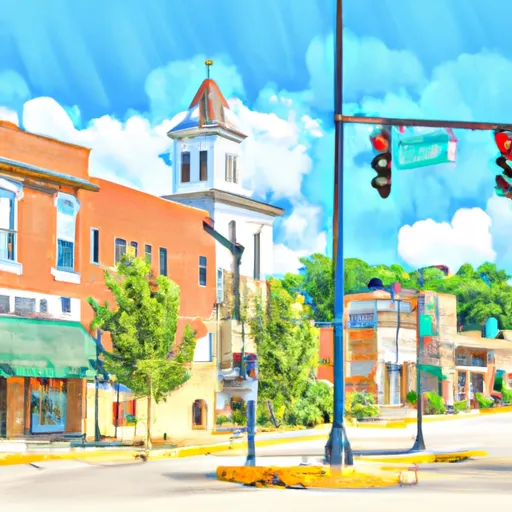-
 Snoflo Premium
Snoflo Premium
Get unlimited access to all our content
With no Ad interruptions! - Start Your Free Trial Login with existing account
Malta
Eden Index
Climate
7.3
•
Recreation
4.2
•
Community
2.1
•
Safeguard
4.9/10

Malta, Illinois is a small village located in DeKalb County, in the northern part of the state. The village experiences a continental climate, characterized by hot summers and cold winters. Summers are typically warm with temperatures reaching highs in the mid-80s (°F), while winters can be quite cold with temperatures dropping below freezing and occasional snowfall.
The hydrology constituents in Malta are primarily influenced by the Kishwaukee River, which flows through the northern part of the village. The river provides water resources for both recreational purposes and agricultural needs in the area. Additionally, there are several small ponds and creeks that contribute to the overall hydrological landscape.
Outdoor enthusiasts in Malta can enjoy a range of recreational activities. The Kishwaukee River offers opportunities for fishing, kayaking, and canoeing. There are also nearby parks and nature preserves, such as the Russell Woods Forest Preserve, where visitors can explore hiking trails, have picnics, and observe local wildlife. The Malta Sports Complex provides facilities for sports like baseball, softball, and soccer. Overall, Malta, Illinois offers a pleasant climate and diverse outdoor recreation options for residents and visitors.
What is the Eden Index?
The Snoflo Eden Index serves as a comprehensive rating system for regions, evaluating their desirability through a holistic assessment of climate health, outdoor recreation opportunities, and natural disaster risk, acknowledging the profound impact of these factors on livability and well-being.
Climate Health Indicator (CHI): 7.3
Malta receives approximately
925mm of rain per year,
with humidity levels near 82%
and air temperatures averaging around
9°C.
Malta has a plant hardyness factor of
5, meaning
plants and agriculture in this region thrive during a short period during spring and early summer. Most
plants will die off during the colder winter months.
By considering the ideal temperature range, reliable water supplies, clean air, and stable seasonal rain or snowpacks, the Climate Health Indicator (CHI) underscores the significance of a healthy climate as the foundation for quality living.
A healthy climate is paramount for ensuring a high quality of life and livability in a region, fostering both physical well-being and environmental harmony. This can be characterized by ideal temperatures, reliable access to water supplies, clean air, and consistent seasonal rain or snowpacks.
Weather Forecast
Streamflow Conditions
Rock
Area Rivers
Rock
Snowpack Depths
Rock
Reservoir Storage Capacity
Rock
Groundwater Levels
Recreational Opportunity Index (ROI): 4.2
The Recreational Opportunity Index (ROI) recognizes the value of outdoor recreational options, such as parks, hiking trails, camping sites, and fishing spots, while acknowledging that climate plays a pivotal role in ensuring the comfort and consistency of these experiences.
Access to outdoor recreational opportunities, encompassing activities such as parks, hiking, camping, and fishing, is crucial for overall well-being, and the climate plays a pivotal role in enabling and enhancing these experiences, ensuring that individuals can engage in nature-based activities comfortably and consistently.
Camping Areas
| Campground | Campsites | Reservations | Toilets | Showers | Elevation |
|---|---|---|---|---|---|
| Janice Rec.Area | 7 | 116 ft | |||
| Turkey Fork Rec. Area | 76 | 278 ft | |||
| Archusa Creek Waterpark | 69 | 315 ft | |||
| Lake Perry | 20 | 157 ft | |||
| Dunns Falls Water Park | None | 269 ft | |||
| Cypress Creek Landing | 17 | 103 ft | |||
| Maynor Creek Waterpark | None | 362 ft | |||
| Fairley Bridge Landing | 6 | 88 ft | |||
| Lake Boque Homa | None | 238 ft | |||
| Clarkco State Park | None | 273 ft |
Nearby Ski Areas
Catastrophe Safeguard Index (CSI):
The Catastrophe Safeguard Index (CSI) recognizes that natural disaster risk, encompassing floods, fires, hurricanes, and tornadoes, can drastically affect safety and the overall appeal of an area.
The level of natural disaster risk in a region significantly affects safety and the overall livability, with climate change amplifying these risks by potentially increasing the frequency and intensity of events like floods, fires, hurricanes, and tornadoes, thereby posing substantial challenges to community resilience and well-being.
Community Resilience Indicator (CRI): 2.1
The Community Resilience Indicator (CRI) recognizes that education, healthcare, and socioeconomics are crucial to the well-being of a region. The CRI acknowledges the profound impact of these elements on residents' overall quality of life. By evaluating educational resources, healthcare accessibility, and economic inclusivity, the index captures the essential aspects that contribute to a thriving community, fostering resident satisfaction, equity, and social cohesion.

